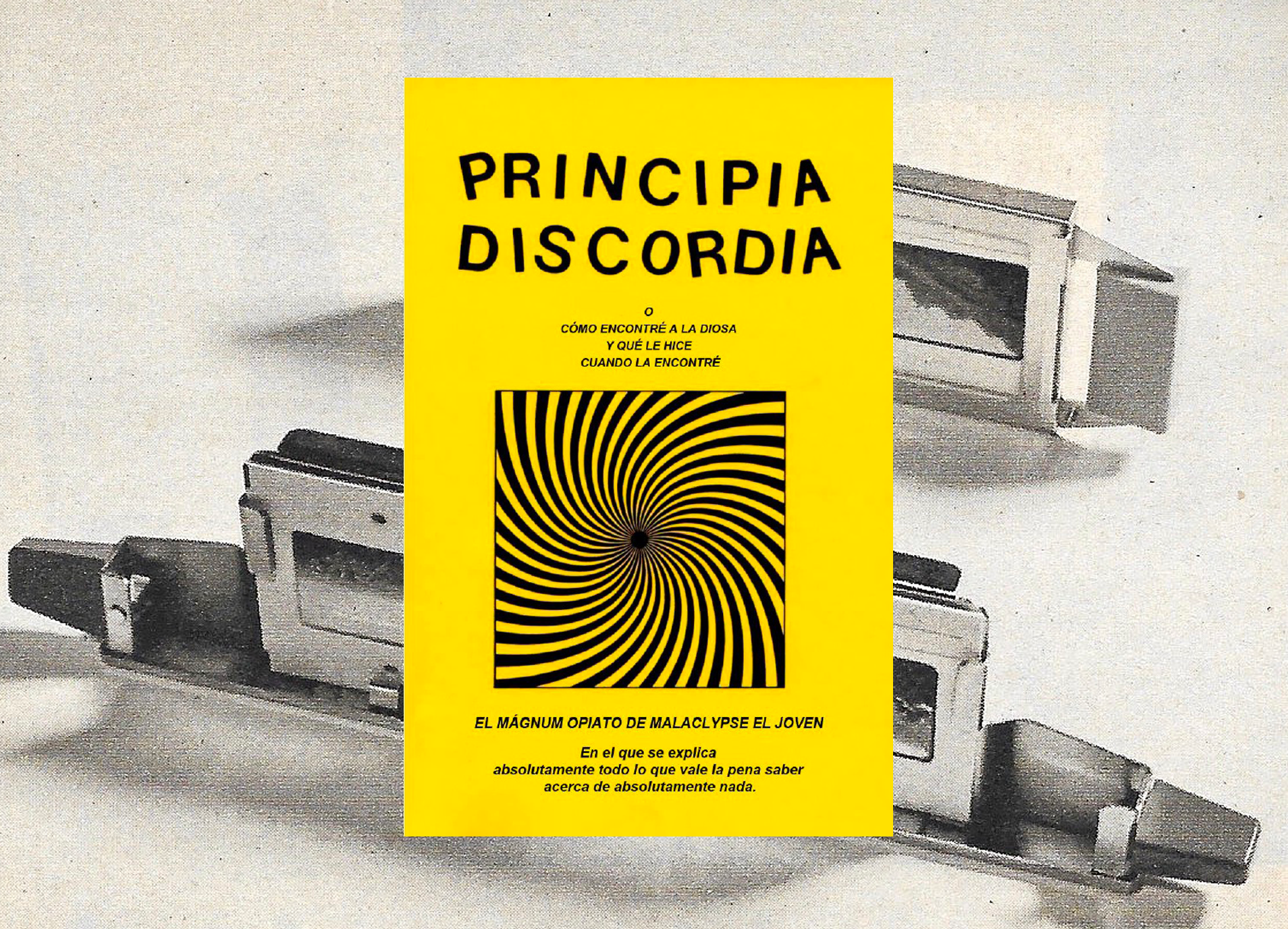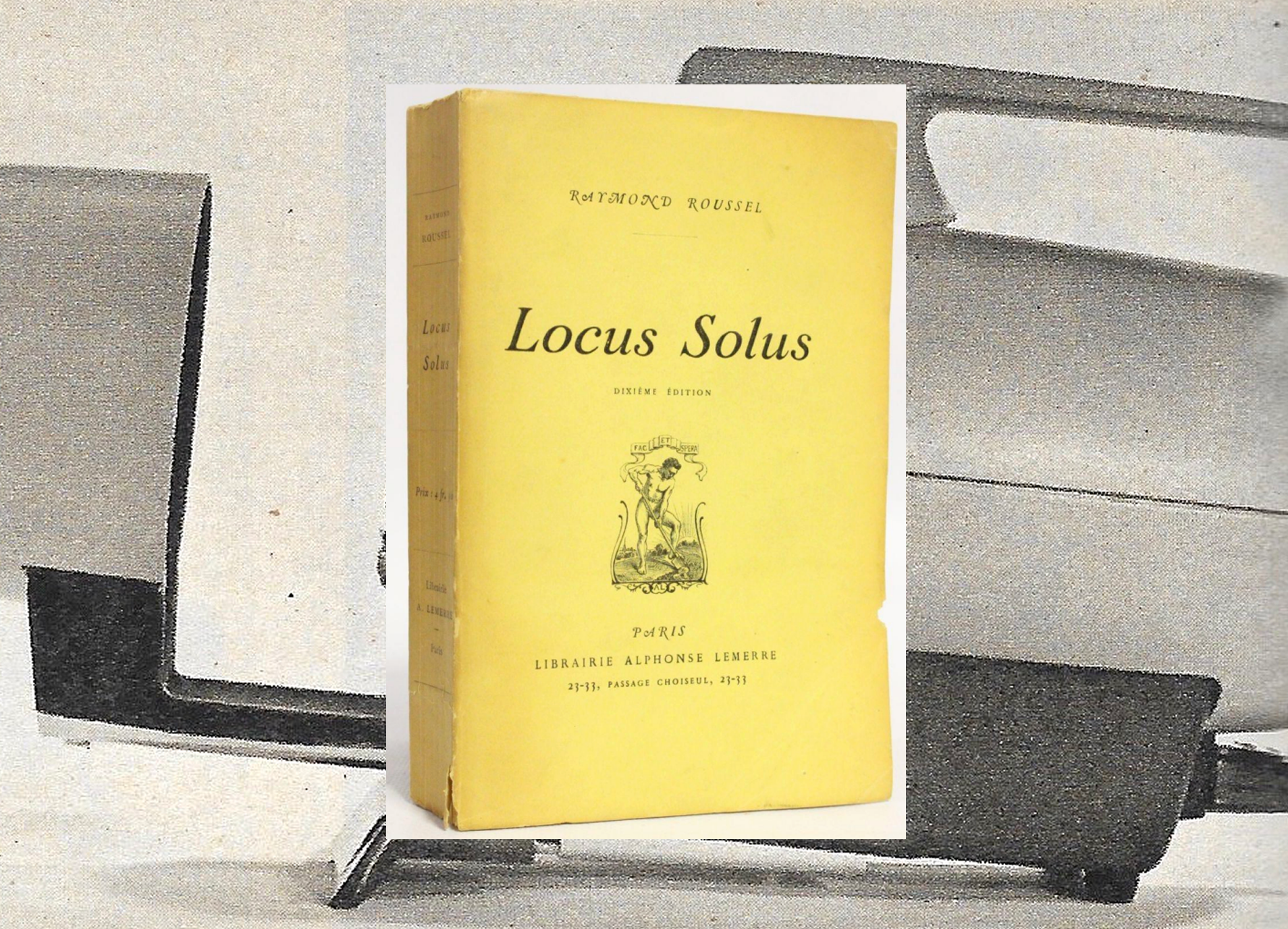
Estamos de vuelta 👋️
En tres días finaliza el verano y Pequeña Antimateria regresa dispuesta a aliviar la melancolía otoñal con recomendaciones fabulosas.
Las guerras continúan, el terrorismo machista campa a sus anchas, la deshumanización capitalista no da tregua, la mediocridad nos acorrala… pero nos quedan el Arte, la Naturaleza y el Amor.
Fiuuuu 😅
We are back 👋️
In three days, summer ends and Little Antimatter returns ready to alleviate the autumn blues with fabulous recommendations. The wars continue, sexist terrorism is rampant, capitalist dehumanization gives no respite, mediocrity corners us... but we are left with Art, Nature and Love.
Pheeew 😅

Erik PseudoNovalis es un turbo-prolífico volcán de canciones, collages, ideas y pasiones imposibles de enumerar y citar aquí.
Le conocimos en los 2000s cuando a través de su pseudónimo AFRIKA PSEUDOBRUITISMUS editaba música multidimensional, acompañada de piezas audiovisuales y collages -literalmente- divinos. Desde entonces su creatividad no ha hecho más que expandirse y enriquecerse. Esta semana participa en el Gutter Fest y allí estrenará sus nuevos films, TOO COOL VIDEO GAMES 2, fruto de su última colaboración con el misterioso colectivo Pata-NO (Texas) y Alan Smithee. Estas pelis serán proyectadas en loop a lo largo de todo el Festival.
https://pseudobruitismusafricamus.blogspot.com/
https://afrikapseudobruitismus1.bandcamp.com/
https://www.youtube.com/@acerodan
Erik PseudoNovalis is a turbo prolific volcano of wonderful songs, collages, ideas and passions that are impossible to list and quote here. We met him in the 2000s when, through his pseudonym AFRIKA PSEUDOBRUITISMUS, he released multidimensional music, accompanied by audiovisual pieces and -literally- divine collages.
Since then his creativity has only expanded and enriched. This week he will participate in the Gutter Fest and there he will premiere his new films, TOO COOL VIDEO GAMES 2, the result of his latest collaboration with the mysterious collective Pata-NO (Texas) and Alan Smithee. These films will be projected in a loop throughout the Festival.

4 ITEMS by PseudoNovalis for PEQUEÑA ANTIMATERIA
The good people of Colectivo Antimateria kindly invited me toparticipate in this proposal... 4 Items; 4 Essentials? I am a person ofvery diverse and excessively passionate obsessions and philias. But thistime I had to choose only four of them, however, the choice was almostimmediate.

ITEM #1 The Beach Boys & SMILE
Sin duda, cualquiera que me conozca, podría imaginar hacia donde se decantaría mi primera elección en este juego: The Beach Boys; o más concretamente, la devoción hacia la figura de San Brian Wilson. Sé que no estoy solo en esto cuando afirmo que, muy probablemente, él haya sido el compositor más brillante, como mínimo en la historia del Pop, del pasado siglo XX.
El clímax quijotesco de su genio creativo llega con las prolongadas sesiones, durante los años 1966 y 1967, de un disco jamás publicado: SMILE. Ahí encontramos a un jovencito de veintipocos años, sin estudios ni conocimientos de solfeo, produciendo y dirigiendo intuitiva y magistralmente a una orquesta... Las primeras palabras que acuden a mi mente al pensar en el sonido de SMILE son: excéntrico, extravagante. Este sonido podría enmarcarse dentro de la psicodelia (no obstante, en esos años, el LSD opera activamente, para bien y para mal, en el cerebro de Brian Wilson) pero es más que eso, este sonido psicodelicado - término con el que Brian se autodefinió en una entrevista - no es para todos los paladares. Musicalmente tan complejo y barroco como Bach, el álbum resultaba una suerte de cubo de Rubik, donde las melodías y patrones musicales se repiten en variaciones en los diversos, y abundantes fragmentos grabados en estudio, de modo que podían entrelazarse y encajar de múltiples maneras. Un puzzle imposible de resolver, un disco tan ambicioso que acabó colapsando al pobre Brian. Dejando así la incógnita del disco que nunca fue... pero que, afortunadamente, se extiende hacia el Infinito gracias a la interminable cantidad de sesiones que perduran en sus eternas permutaciones y a sus perennes GOOD VIBRATIONS; junto con los numerosos bootlegs publicados.
Los Beach Boys son mi antidepresivo musical más recurrente; pero SMILE brilla en su excelencia, en la novedosa combinación de distintos timbres y colores conjugados, que van de lo sinfónico a lo exótico, en el brillo de sus armonías, tanto vocales como instrumentales (Harmonía de las Esferas), y en su sensibilidad (¡Ay!... Surf’s UP).
En mí, los Beach Boys trascienden lo musical, y entran en lo personal, e incluso más allá... Lo Espiritual: aquellas Sinfonías adolescentes dedicadas a Dios nacidas de alguien, que, pese a una dramática vida, siempre escogió ofrecernos sus melodías curativas.
Aquí link a un bootleg de SMILE, que posee el interés de ser el primero en publicarse, año 1983:
“Quería escribir música alegre que hiciera sentir bien a otras personas. Música que ayude y sane, porque creo que la música es la voz de Dios.”
(BRIAN WILSON)
Undoubtedly, anyone who knows me could imagine where my firstchoice in this game would lean: The Beach Boys; or more specifically,the devotion to the figure of Saint Brian Wilson. I know I am not alonein this when I affirm that, very probably, he has been the most brilliantcomposer, at least in the history of Pop, of the past 20th century.The quixotic climax of his creative genius comes with the prolongedsessions, during the years 1966 and 1967, of an album never released:SMILE. There we find a young man in his early twenties, withoutstudies or knowledge of music theory, producing, and intuitively andmasterfully directing an orchestra... The first words that come to mymind when thinking about the sound of SMILE are: eccentric,extravagant. This sound could be framed within psychedelia (however,in those years, LSD was actively operating, for better or worse, in BrianWilson’s brain) but it is more than that, this psychodelicated sound - aterm Brian self-defined in an interview - is not for all tastes. Musicallyas complex and baroque as Bach, the album was a kind of Rubik’s cube,where melodies and musical patterns are repeated in variations in thevarious, and abundant fragments recorded in the studio, so they couldintertwine and fit in multiple ways. An impossible puzzle to solve, analbum so ambitious that it ended up collapsing poor Brian. Thus leavingthe enigma of the album that never was... but fortunately, it extendstowards Infinity thanks to the endless amount of sessions that endure intheir eternal permutations and their perennial GOOD VIBRATIONS;along with the numerous bootlegs published.The Beach Boys are my most recurrent musical antidepressant; but SMILE shines in its excellence, in the novel combination of differenttimbres and conjugated colors, ranging from the symphonic to the
exotic, in the brilliance of its harmonies, both vocal and instrumental (Harmony of the Spheres), and in its sensitivity (Oh!.. Surf’s UP).In me, the Beach Boys transcend the musical, and enter the personal,and even beyond... The Spiritual: those Teenage Symphonies dedicatedto God born from someone who, despite a dramatic life, always choseto offer us his healing melodies.Here is a link to a bootleg of SMILE, which has the interest of beingthe first to be published, in the year 1983:
“I wanted to write joyful music that made other people feel good. Musicthat helps and heals, because I believe that music is God’s voice.”(BRIAN WILSON)

ITEM #02 Discordianismo & PRINCIPIA DISCORDIA
“Porque el Surf no es sólo un deporte; es un estilo de vida. Y el Discordianismo no es sólo una religión; es una enfermedad mental." (LORD OMAR RAVENHURST)
Discordianismo... ¿Una broma disfrazada de religión, o una religión disfrazada como broma? Una gamberrada filosófica y esotérica, que, trascendiendo más allá de lo previsto, terminó alcanzando una profundidad espiritual y Sí, religiosa, de largo alcance; un tanque mental de guerrilla ontológica, con influencias, préstamos y paralelismos con el taoísmo, el budismo zen, o la patafísica. Una broma absurda a tener muy en cuenta... ¡esto no es pastafarismo!
El discordianismo rinde culto a Eris, diosa grecorromana de la Discordia. ¿Una religión basada en el CAOS? Fue fundada en 1957 por Malaclypse el Joven (Greg Hill) y Omar Khayyam Ravenhurst (Kerry Wendell Thornley).
PRINCIPIA DISCORDIA puede ser considerada la Biblia del movimiento discordiano, o al menos su texto canónico más conocido e importante, en el que se explica todo lo que vale la pena saber acerca de absolutamente nada.
Hay unos muy escasos libros escogidos a lo largo de una vida, que nos transforman para siempre, así me sucedió con el PRINCIPIA, enseñándome a aceptar felizmente el Caos imperante en mi vida; así como a dudar de todo, adoptar el QUIZÁS como respuesta a todas las grandes cuestiones; y, entre risas, expandiendo la conciencia, como lo haría un fuerte laxante espiritual.
A pesar del texto que reza en la portada: EL MÁGNUM OPIATO DE MALACLYPSE EL JOVEN; el pastiche de textos, collages, dibujos y diagramas varios que reúne PRINCIPIA DISCORDIA son de diversa y más bien anónima autoría y procedencia; incluyendo asimismo referencias a un texto discordiano anterior: The Honest Book of Truth (HBT) en este caso, escrito por Lord Omar. Durante la década de los 60, el movimiento discordiano se popularizó por el boca a boca y publicaciones underground como el PRINCIPIA, cuya primera edición fue fotocopiada en 1963 en las oficinas de Jim Garrison, el fiscal que llevaba el caso de la investigación del asesinato de JFK (Oops!). En la década de 1970 ganó popularidad debido a su papel en la novela THE ILLUMINATUS! Trilogy (1975), escrita por Robert Anton Wilson y Robert Shea. en la cual se representa una enrevesada trama de conspiraciones y sociedades secretas, poniendo el foco en los supuestos Illuminati, y presentando a la Sociedad Discordiana como los buenos en lucha contra esta élite oculta. La trilogía, adornada aquí y allá con citas de PRINCIPIA DISCORDIA, sembró la incógnita. Las cartas y preguntas a Wilson y Shea acerca de las distintas teorías alrededor de los Illuminati; y sobre aquel misterioso libro citado, ¿... existía realmente?, se acumulaban.
Y ellos se dedicaron a difundir los más diversos bulos, medias verdades, y excéntricas mentiras posibles, que no hacían sino acrecentar la leyenda de este libro iniciático y Follamentes por excelencia (véase OPERACIÓN MINDFUCK), que, inicialmente, durante años, circuló libremente fotocopiado. Un verdadero Literatus Inmortalis. Como diría Ken Kensey: “Aquí estamos operando a muchos niveles.”
"Los discordianos no tenemos dogmas que sean creencias absolutas. Tenemos 'catmas' que son metacreencias relativas y el Catma central es que todos los fenómenos son reales en algún sentido, irreales en algún sentido, sin sentido y reales en algún sentido, sin sentido e irreales en algún sentido y sin sentido reales e irreales en algún sentido... y si repites 666 veces esto alcanzarás la iluminación suprema... EN ALGÚN SENTIDO!”
(POEE)
“Quizás el secreto final de los Illuminati es que no sabes que eres miembro hasta que es demasiado tarde para salirse.”
(ROBERT ANTON WILSON)
Because surfing is not just a sport; it’s a lifestyle. And Discordianism isnot just a religion; it is a mental illness.”(LORD OMAR RAVENHURST)
Discordianism... A joke disguised as a religion, or a religion disguisedas a joke? A philosophical and esoteric prank that, transcending beyondwhat was expected, ended up reaching a spiritual and Yes, religiousdepth of long range; a mental tank of ontological guerrilla warfare, withinfluences, borrowings, and parallels with Taoism, Zen Buddhism, orPataphysics. An absurd joke to be taken very seriously... this is notPastafarianism!Discordianism worships Eris, the Greco-Roman goddess of Discord. Areligion based on CHAOS? It was founded in 1957 by Malaclypse theYounger (Greg Hill) and Omar Khayyam Ravenhurst (Kerry WendellThornley).PRINCIPIA DISCORDIA can be considered the Bible of the Discordianmovement, or at least its most known and important canonical text,wherein is explained absolutely everything worth knowing aboutabsolutely anything.
There are very few chosen books throughout a lifetime that transformus forever, this happened to me with the PRINCIPIA, teaching me tohappily accept the prevailing Chaos in my life; as well as to doubteverything, adopt MAYBE as the answer to all the big questions; and,amidst laughter, expanding consciousness, like a strong spirituallaxative would.Despite the text on the cover: THE MAGNUM OPIATE OFMALACLYPSE THE YOUNGER; the pastiche of texts, collages,drawings, and various diagrams that PRINCIPIA DISCORDIA gathersare of diverse and rather anonymous authorship and origin; alsoincluding references to an earlier Discordian text: The Honest Book ofTruth (HBT) in this case, written by Lord Omar. During the 1960s, theDiscordian movement popularized through word of mouth andunderground publications like the PRINCIPIA, whose first edition wasphotocopied in 1963 in the offices of Jim Garrison, the prosecutorhandling the investigation of JFK’s assassination (Oops!). In the 1970s,it gained popularity due to its role in the novel THE ILLUMINATUS!Trilogy (1975), written by Robert Anton Wilson and Robert Shea. In it,a convoluted plot of conspiracies and secret societies is depicted,focusing on the supposed Illuminati, and presenting the DiscordianSociety as the good guys fighting against this hidden elite. The trilogy,adorned here and there with quotes from PRINCIPIA DISCORDIA,sowed the enigma. Letters and questions to Wilson and Shea about thevarious theories around the Illuminati; and about that mysterious quotedbook, did it really exist?, were accumulated.And they dedicated themselves to spreading the most diverse hoaxes,half-truths, and eccentric lies possible, which only served to increasethe legend of this initiatory and MINDFUCKING book par excellence(see OPERATION MINDFUCK, please), which initially circulatedfreely photocopied for years. A true Literatus Inmortalis. As Ken Keseywould say: “Here we are operating on many levels.”
"Discordians don’t have dogmas, which are absolute beliefs; wehave Catmas which are relative meta-beliefs. And the centraldiscordian catma is, as I said before: any affirmation is true in somesense, false in some sense, meaningless in some sense, true and false insome sense, true and meaningless in some sense, false and meaninglessin some sense, and true and false and meaningless in some sense. Andif you repeat this 666 times, you will achieve supreme enlightenment...IN SOME SENSE!"(POEE)
“Perhaps the final secret of the Illuminati is that you don’t know you’rea member until it’s too late to get out.”(ROBERT ANTON WILSON)

ITEM #03 El eterno enigma de Raymond Roussel (1877-1933)
Campeón de la Palabra y Presidente de la República de los Sueños, poeta, novelista, dramaturgo, músico, ajedrecista, filólogo, dandy, multimillonario, etc. etc.
Un ejemplo radical de Patafísica involuntaria, resultando así Roussel - inconsciente de ello - más surrealista, en su delirio, que los propios surrealistas, cuya admiración (más jóvenes ellos) no alcanzaba a entender. André Breton diría de él: "es el más grande magnetizador de los tiempos modernos".
LOCUS SOLUS, publicada en 1914, y novela posterior a la también fantásticamente irreal IMPRESIONES DE ÁFRICA, es como dice Enrique Vila-Matas: “muy alejada de lo que hasta entonces en mi tierra me habían dicho que era una novela.”
Como eterno bibliófilo de rarezas que soy, puedo afirmar que no existe un lugar igual, ni en la literatura ni ninguna otra parte, a Locus Solus, esta villa que recorremos en un largo paseo, de la mano del anfitrión Martial Canterel, filántropo, erudito y científico genial. Porque todo sucede aquí como en el tejido etéreo y fantasmagórico de los sueños, nada es real en las novelas de Roussel, creadas a partir de un sistema muy particular y complejo de juegos fonéticos; método explicado póstumamente en su obra CÓMO ESCRIBÍ ALGUNOS DE MIS LIBROS. Y como en los sueños, todo es Alucinación aquí, los experimentos rocambolescos y máquinas solteras que nos muestra Canterel, se suceden y se nos aparecen tan bellas y fantabulosas, como morbosas y experimentadas entre la frialdad y la mayor naturalidad.
Tan sólo nombrar entre las maravillas de este peculiar Parque de Atracciones: un martinete formado por un mosaico de dientes, un gigantesco diamante relleno de agua en la que flota una chica que baila, un gato afeitado que transmite electridad, la sustancia llamada resurrectina... y muchas otras sorpresas oníricas e hiperbólicas que esperan al lector atrevido. No es de extrañar, pues, que LOCUS SOLUS, fuera el libro predilecto de Salvador Dalí, de entre su nutrida biblioteca. Este fulgurante enigma Roussel (la clave de los sueños), a pesar de la compleja lectura de sus obras, merece visitar tanto LOCUS SOLUS, esta mágica villa y catedral literaria del delirum tremens, como sus IMPRESIONES DE ÁFRICA, que en poco o nada se asemejan al África negra, ni a ningún otro lugar del universo conocido.
“¡Qué personaje sorprendente! Vivía encerrado en su roulotte, con las persianas bajadas. Le vi una vez en la Régence, donde jugaba al ajedrez. Iba vestido de negro, muy 'señorito'. No me interesó conocerlo, había leído su obra y me bastaba para opinar. Lo que sí me importaba era su actitud, cómo había hecho todo aquello, por qué razones. ¡Tuvo una vida extraordinaria! Y, al final, ese suicidio..."
(DUCHAMP)
Champion of the Word and President of the Republic of Dreams, poet,novelist, playwright, musician, chess player, philologist, dandy,multimillionaire, etc. etc.A radical example of involuntary Pataphysics, thus making Roussel -unaware of it - more surrealist, in his delirium, than the surrealiststhemselves, whose admiration (being younger) he could not understand.André Breton would say of him: “he is the greatest magnetizer ofmodern times.”LOCUS SOLUS, published in 1914, and a novel following the also
fantastically unreal IMPRESSIONS OF AFRICA, is, as Enrique Vila-Matas says: “very far from what in my land they had told me a novel
was.”As an eternal bibliophile of rarities, I can affirm that there is no placelike Locus Solus, neither in literature nor anywhere else, this villa thatwe tour in a long walk, hand in hand with the host Martial Canterel,philanthropist, scholar, and brilliant scientist. Because everything
happens here as in the ethereal and ghostly fabric of dreams, nothing isreal in Roussel’s novels, created from a very particular and complexsystem of phonetic games; a method explained posthumously in hiswork HOW I WROTE SOME OF MY BOOKS. And like in dreams,everything here is Hallucination, the rocambolesque experiments andbachelor machines that Canterel shows us, succeed and appear to us asbeautiful and fantastic, as morbid and experienced with the greatestcoldness and naturalness.Just to name among the wonders of this peculiar Amusement Park: apile driver made up of a mosaic of teeth, a gigantic diamond filled withwater in which a girl floats and dances, a shaved cat that transmitselectricity, the substance called resurrectine... and many otherdreamlike and hyperbolic surprises that await the daring reader. It is notsurprising, then, that LOCUS SOLUS was Salvador Dalí’s favoritebook, among his extensive library.This dazzling enigma Roussel (the key to dreams), despite the complexreading of his works, deserves a visit to both LOCUS SOLUS, thismagical villa and literary cathedral of delirium tremens, and hisIMPRESSIONS OF AFRICA, which bear little or no resemblance toblack Africa, nor to any other place in the known universe.“What a surprising character! He lived locked up in his caravan, withthe blinds down. I saw him once at the Régence, where he played chess.He was dressed in black, very ‘gentlemanly’. I wasn’t interested inmeeting him, I had read his work and that was enough for me to forman opinion. What did matter to me was his attitude, how he had doneall that, for what reasons. He had an extraordinary life! And, in the end,that suicide..."(DUCHAMP)

ITEM #04 L’ÂGE d’OR (LA EDAD DE ORO)
"L'Âge d'Or es también — y sobre todo — una película de Amour Fou (amor loco), de un impulso irresistible que, en cualesquiera circunstancias, empuja el uno hacia el otro a un hombre y una mujer que nunca pueden unirse."
(LUIS BUÑUEL)
Tras el éxito de UN CHIEN ANDALOU (1929), Luis Buñuel y Salvador Dalí colaboran por segunda y última vez, en un nuevo film surrealista: L’ÂGE d’OR (1930); poniendo además con ello fin a su amistad.
LA EDAD DE ORO podría considerarse el culmen artístico del concepto surrealista del Amour Fou, la expresión de un amor irracional, pasionalmente violento, y en ocasiones, destructivo. Pero, también, para los surrealistas, una poderosa fuerza liberadora y transformadora, que desafía todo norma y ley establecidas, en el impulso de este Amor Loco “...el único verdadero” que nos conduce más allá de lo racional.
Al igual que sucedía en UN CHIEN ANDALOU, nos sumergimos en una cadena de escenas sorprendentes, chocantes y provocativas (Surrrrealismo!), pero el verdadero leit motiv del film es el amor (loco) de la pareja interpretada por Gaston Modot y Lya Lis; que se muestra a menudo separada o en conflictos violentos, pero también se encuentran en situaciones de fuerte pasión y deseo sexual. Este retrato de la relación amorosa se asemeja a la idea surrealista del amor loco, que se presenta como una fuerza contradictoria y poderosa que puede conducir a la creatividad y la transformación.
Esta pareja de amantes caníbales, se muestran así en lucha constante (y burla) frente a las restricciones y convenciones morales y sociales, impuestas por la familia, la Burguesía, el Estado, o La Iglesia.
El estreno en París de L’ÂGE d’OR supuso un tremendo escándalo. A pesar de todo esto, estuvo seis días a sala llena, hasta que fue prohibida por la policía, debido a las presiones de grupos conservadores de extrema derecha, los mismos que destrozaron la sala durante una de las proyecciones. Dicha prohibición duró hasta 1980 en Nueva York y 1981 en París.
Para calibrar el clima erótico, convulso, salvaje y agresivo del film (Gaston Modot pateando, ¡Gaston Modot pateándolo todo, perritos, mendigos, violines!) baste decir que hace un par de años, con el deseo de revisionar la película una vez más y descargarla completa y subtitulada, tras una larga búsqueda en streaming, el único lugar donde pude encontrarla fue... una web porno. Tampoco me resultó tan extraño.
Añadir además que, una vez más y como siempre, sin premeditación intelectual alguna, sino meramente guiado por el sabio hilo del Azar Objetivo, mi último libro autoeditado: CAHIERS d’AMOUR FOU, rememora y aborda la idea de este Amor Loco, propio del surrealismo, desde el olvidado género de la Emblématica, y salpicado también por vetustos textos de Alquimia, Patafísica, poemas, reflexiones y escenas plenas de Erotismo-Festivo, explosivo-fijo y mágico-circunstancial.
Salve EROS!
“L’Âge d’Or is also — and above all — a film of Amour Fou (mad love),of an irresistible impulse that, in any circumstances, pushes a man anda woman towards each other who can never unite.”(LUIS BUÑUEL)After the success of UN CHIEN ANDALOU (1929), Luis Buñuel andSalvador Dalí collaborated for the second and last time on a newsurrealist film: L’ÂGE d’OR (1930); also putting an end to theirfriendship.THE GOLDEN AGE could be considered the artistic culmination of thesurrealist concept of Amour Fou, the expression of an irrational,passionately violent, and sometimes destructive love. But also, for thesurrealists, a powerful liberating and transformative force thatchallenges all established norms and laws, in the impulse of this MadLove “...the only true one” that leads us beyond the rational.As in UN CHIEN ANDALOU, we are immersed in a chain of surprising,shocking, and provocative scenes (Surrrrrrealism!), but the trueleitmotif of the film is the (mad) love of the couple played by GastonModot and Lya Lis; who are often shown separated or in violentconflicts, but also find themselves in situations of strong passion andsexual desire. This portrayal of the love relationship resembles thesurrealist idea of mad love, which is presented as a contradictory andpowerful force that can lead to creativity and transformation.This pair of cannibal lovers is thus shown in constant struggle (andmockery) against the moral and social restrictions and conventionsimposed by the family, the Bourgeoisie, the State, or the Church.The premiere of L’ÂGE d’OR in Paris caused a tremendous scandal.Despite all this, it was sold out for six days until it was banned by thepolice due to pressure from far-right conservative groups, the same oneswho destroyed the theater during one of the screenings. This ban lasteduntil 1980 in New York and 1981 in Paris.
To gauge the erotic, convulsive, wild, and aggressive climate of the film(Gaston Modot kicking, Gaston Modot kicking everything, puppies,beggars, violins!), suffice it to say that a couple of years ago, with thedesire to rewatch the film once more and download it complete andsubtitled, after a long search in streaming, the only place where I couldfind it was... a porn website. It didn’t seem so strange to me either.
Additionally, once again and as always, without any intellectualpremeditation, but merely guided by the wise thread of ObjectiveChance, my latest self-published book: CAHIERS d’AMOUR FOU,recalls and addresses the idea of this Mad Love, characteristic ofsurrealism, through the forgotten genre of Emblematics, and alsosprinkled with ancient texts of Alchemy, Pataphysics, poems,reflections, and scenes full of Festive-Eroticism, explosive-fixed andmagical-circumstantial.
Salve EROS!

